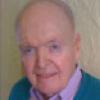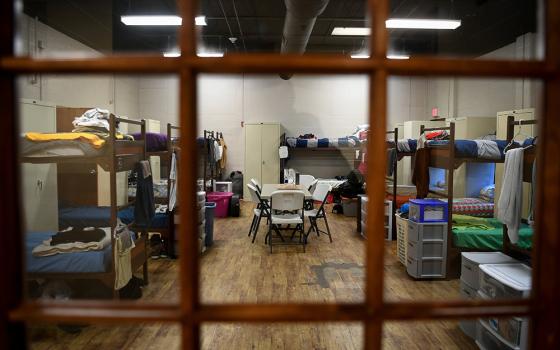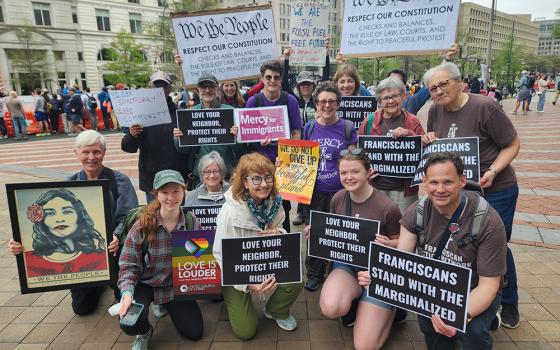The death of Robert F. Kennedy Jr.'s estranged wife, Mary, makes us wonder if a demonic terrorist beyond anyone's cunning to capture has the freedom of the Kennedy compound and will not let the wounds inflicted on one generation heal before inflicting deeper ones on the next. The bell of sorrows groans in the No Man's Land fog stretching from then to now, from the changeless past that possesses us into a present that turns away from us before we can grasp its hand.
The death of Mary Richardson Kennedy seems a flag of distress raised uncertainly by someone who does not believe anyone will see it. There is something almost unutterably sad in the news reports, as if they came from a stark and distant desert, windless except for the long sigh of human loneliness that rolls across it.
Our age is marked by the search for a place deep and remote enough to store the radioactive waste whose deadliness is reflected in a hallway, endless and mirrored, of half-lives. This news reminds us that humanity's real problem is to find a place remote and deep enough to hold its sorrows, the sadness that has no half-life and that is stored, only half-hidden, within the human heart.
Supposedly wise educators and others will speak like crusaders on behalf of sex education at the earliest of grades to prevent illness and promote happiness, but who has devised a curriculum that educates the young about the inescapable pain of being human and how to avoid heartbreak? "More die of heartbreak," Saul Bellow once wrote, but nobody is leading a national campaign against it, he noted, or showing us how to avoid or overcome it.
Therapeutic America is sure there is a cure for everything, of course, but I recall sitting in a hospital holding area not many years ago in which everyone was waiting for their radiation appointment. A young husband held his wife's hand and could only look deeply into her eyes as her name was called and she reluctantly pulled away from him and entered the white-tiled corridor that led to the treatment area. An old man would not let go of his wife's hand as she rose in response to her name and the doctor had to come out and, in a voice loud enough to multiply rudely the pain that already overflowed the room, said, "You have to understand that your wife has a most serious form of cancer." But, of course, the old man already knew that, and that was why he could not let go of her.
Across the way, a boy about 10 years old adjusted the baseball cap on his head made bald by earlier treatments. How much, I wondered, of the Gross National Product of sadness was he bearing, with courage so plain and simple that it could make you weep? In the far corner, a young father softly crooned something like a lullaby to the child he held in his arms.
And from three walls, television sets, as if this were a noisy sports bar for people killing time, stared glassily down on this assemblage of ordinary people who were being killed by time. Mercifully, the sets were silent, but that only underscored the ironic irrelevance of Dr. Phil's confident smile as he dispensed advice that literally went over the heads of this randomly gathered group, gathered by chance, as people are on a plane or in a theater or in an airport, bound together by the same longing for love and the invisible scars of suffering.
There was, I thought, a Eucharist of sorts being celebrated in this room in which everyone was afflicted, those who suffered from cancer and those who loved and cared for them who bore their beloved's suffering and their own sadness, too deep to be named easily if at all, as they comforted them. This is my body, each of them could say, this is my blood, in this Mystery of separation and loss that was being offered in a place of which it could be said, as Oscar Wilde wrote out of the agony of his own imprisonment, "Where there is sorrow, there is holy ground" (De Profundis, 1895).
If sadness is invisible, why, we might ask, do we see so much of it? Our inheritance from Adam and Eve is not what is called Original Sin but is this sorrow that is unoriginal because none of us has been denied his or her share of it. Suffering can be intense for us, as in a misunderstanding between people who love each other and so have a sharpened capacity to hurt each other, and yet be unnoticed by everybody around us.
Yet it is suffering as an inevitable byproduct of loving that we all know well. If you never loved anyone, you would never suffer. But, of course, you would never be truly alive either. This combination of love that bears sorrow lies at the heart of the truly religious Mystery of being human. This is the Mystery struck like a spark from the death of Mary Kennedy that draws our attention, not for the chatter it sets off but because of the light that bids us not to judge her or her former husband, but to recognize what a family resemblance we all share in the pain we all know.
[Eugene Cullen Kennedy is emeritus professor of psychology at Loyola University, Chicago.]
|
Editor's note: We can send you an email alert every time Kennedy's column, Bulletins from the Human Side," is posted to NCRonline.org. Go to this page and follow directions: Email alert sign-up. If you already receive email alerts from us, click on the "update my profile" button to add Kennedy to your list. |



